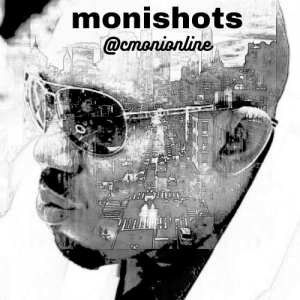Hello, reader.
Sometime during the summer, we made a call for writers to apply to our one-month free online writing retreat. There, we discussed the vital elements of storytelling, and carried out writing exercises to flex our writing muscles and the lessons we learnt from the workshop. Too bad you missed, no? But not to worry, we’ve got you covered. We’ll be releasing weekly highlights on the conversations we had during the retreat/workshop, plus a shirt story recommendation. This is the first part.
In this highlight series, we’ll be talking about the first and one of the most essential elements in writing: Plot.
But before we launch into the definition of plot and other accompanying terms, I think it’s important to have an understanding of what a story is.
What do you think a story is? Or rather, more precisely, what are the essentials of a good story, for you? I don’t expect a long, farfetched answer, just a simple response to what you think makes a story good or brilliant — you should define that for yourself.
Personally, I think any good story is an exercise in defamiliarization. Simply put: making the familiar appear new. Everything you ever want to write about has already been written (shocking revelation? Not so much.) Think about it—depression, wars, hunger, climate change, the end of the world, death, queerness, murder, literally everything, every theme you want, or can imagine, to write about. Someone somewhere has already written about it. And oftentimes, it’s the bane of a writer’s existence, this seeming ‘lack’ of new ideas. It’s what majorly constitutes a creative block. Of course, there are other reasons why a block happens — like, for one, the inability to find the right words to translate a thought or series of thoughts onto page — but most times it’s because the writer thinks there isn’t anything new to write about. But is that the truth?
Every story you know is an exploration of something that has already been, already is in, existence. But what differentiates a story is perspective, angles. If you’re familiar with Art you’d understand this much better: a view from a landscape offers a different visual representation in comparison with, say, a birdsview. In Physics, for example, “accommodation” is the term that best relates to this concept: How much can you see? How much can you identify, and how well can you relay what you’ve identified? That is what each story does.
Perspective = Peculiarity.
To quote Victor Shklovsky: “Art makes the familiar strange so that it can be freshly perceived.”
This is where “Plot”, as an element of writing, comes in.
Plot can be simply defined as what happens in a story. I like to think that plot is the most important element of a story. More than style, even. Plot is the story in and of itself. Plot highlights how a story develops, how the events in the story unfold, and how these events are dispersed in time. But it’s important to know that the plot of a story isn’t simply a sequence of events. It’s sort of like a journey, linked to one another.
Eg, where X is a character: X wants something (motivation) — X encounters an obstacle (conflicts) — X has to get rid of these obstacles/setbacks in order to reach their goal (confrontation/decision). We’ll get into the various pillars of arrangement in a different highlight.
All the things that your character X has to do in order to reach their goal(happiness, grief, revenge, love) is what makes for an exciting plot. A plot entails an interruption of a pattern. It isn’t linearity—it’s a turning point. A plot centers on a question, or strings of questions, that must be answered throughout the span of a story.
Plot is what makes a story rounded. It’s one of the elements that exposes a character and their motivations to the readers. Plot gives a story its energy, suspense, character development, thrill, and luster.
A story is dull, dragging, boring if the plot is flat. Or other times, if the plot is too convoluted/complex. Yes, remember the maxim, “too much of everything is bad”? Well, when the plot of your story is difficult to follow, it tends to mar the story.
Trying to do so many things at the same time within a story stretches the plot and exhausts its thrill. If a reader can’t keep up with the multitude of characters, or plethora of information that you throw their way, then your plot has failed.
But if your readers are unable to put the story down because they always want to know what happened next—where does this turn lead into, does X get what they want in the end, does the conflict get resolved, do they find love—then, congratulations, your plot has excelled.
Before a close, think about a book you’ve read that you were unable to put down because you just wanted to know what happened next. For me, it’s Akwaeke Emezi’s The Death of Vivek Oji. I just couldn’t stop turning page after page. It was a rollercoaster of emotions, one exciting page after another. This is because of the compact plot of the book. Nothing ever occurs in isolation in the novel. Everything that ever happened had both a cause and an effect. It’s storytelling at its finest.
Which book, or short story, have you read that left you in a state of awe because of its amazing plot?
Recommended Reading: The Street Sweep by Meron Hadero (ZYZZYVA, 2018).
See you next week.






